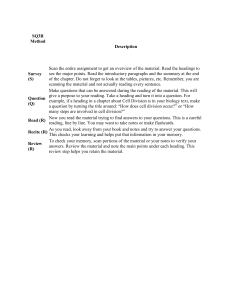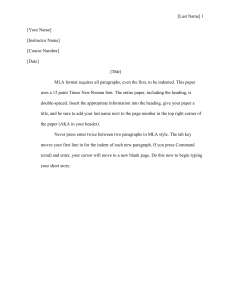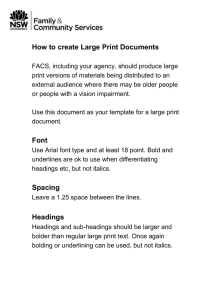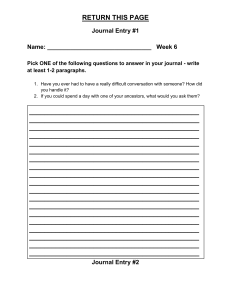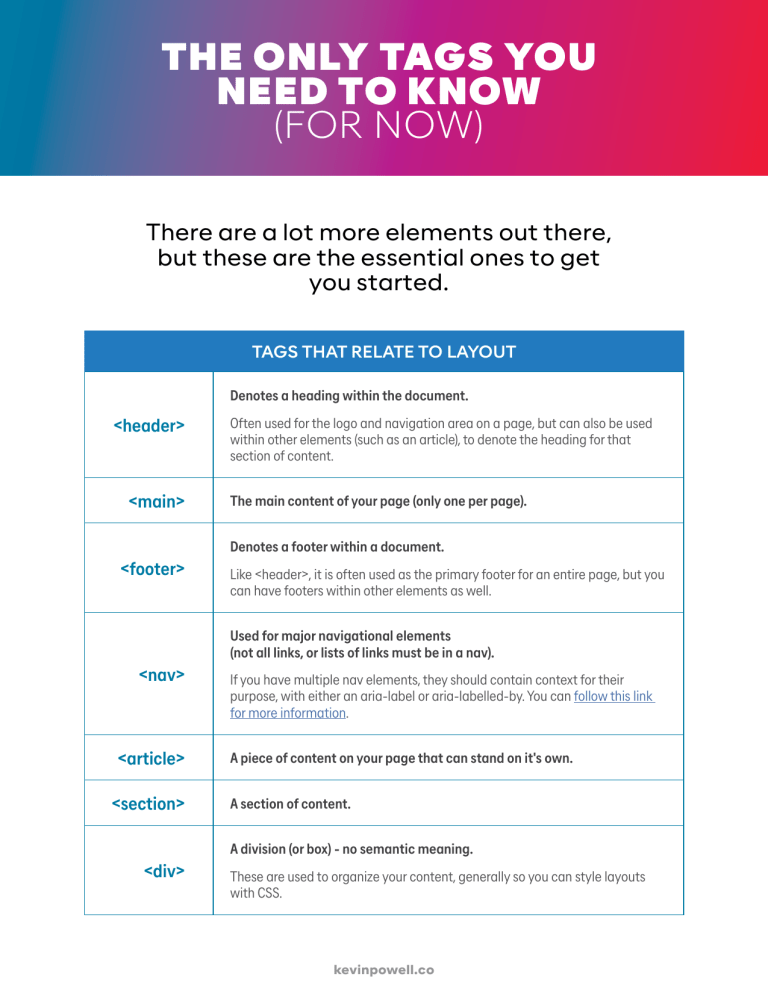
THE ONLY TAGS YOU NEED TO KNOW (FOR NOW) There are a lot more elements out there, but these are the essential ones to get you started. TAGS THAT RELATE TO LAYOUT Denotes a heading within the document. <header> <main> Often used for the logo and navigation area on a page, but can also be used within other elements (such as an article), to denote the heading for that section of content. The main content of your page (only one per page). Denotes a footer within a document. <footer> Like <header>, it is often used as the primary footer for an entire page, but you can have footers within other elements as well. Used for major navigational elements (not all links, or lists of links must be in a nav). <nav> <article> <section> If you have multiple nav elements, they should contain context for their purpose, with either an aria-label or aria-labelled-by. You can follow this link for more information. A piece of content on your page that can stand on it's own. A section of content. A division (or box) - no semantic meaning. <div> These are used to organize your content, generally so you can style layouts with CSS. kevinpowell.co THE ONLY TAGS YOU NEED TO KNOW (FOR NOW) TAGS THAT RELATE TO TEXT / CONTENT <h1> ... <h6> <p> <strong> <em> Heading levels. These create hierarchy within your page. Think of them as creating a table of contents. Paragraph Strong importance (bold by default) This is an inline element, used inside of paragraphs and headings to put more importance on some of the text Emphasis (italic by default) This is an inline element, used inside of paragraphs and headings to put emphasis on certain words within the text Anchor <a> Used is to create links - think of it as anchoring to another location This is an inline element, and can be used inside of paragraphs and headings <ul> & <ol> <li> <span> <img> Unordered & ordered lists List item Used inside of <ul> and <ol> elements Similar to <strong> and <em> but with no default styling and no semantic meaning. You would use CSS to style it how you want. An image Must have an alt attribute, which describes the image, you can read more here. kevinpowell.co

